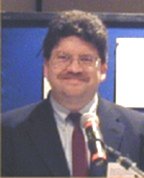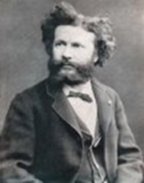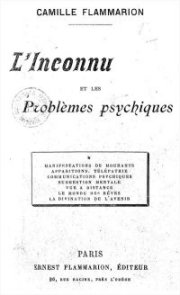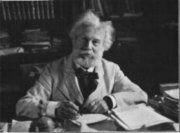 |
 |
| Click here for the PF Lyceum Site Index
 Camille Flammarion’s The Unknown (1900) PF Lyceum Blog #21 posted July 14th, 2007 by Carlos S. Alvarado, Ph.D. Parapsychology Foundation, Inc.  The object of these researches,” wrote the author of the work reviewed here, “is to discuss if the soul of man exists as an entity, independent of his body, and if it will survive the destruction of the same” (Flammarion, 1900b, p. 477). The investigation in question, published as L’inconnu et les problèmes psychiques, was a collection of psychic experiences compiled by French astronomer Camille Flammarion (1842–1925), who was also a psychical researcher. (For a bibliography of Flammarion’s books on astronomy and other topics such as psychic phenomena click here.) The book was translated into English as L’inconnu: The Unknown [1900b]. For the Table of Contents, click here. The object of these researches,” wrote the author of the work reviewed here, “is to discuss if the soul of man exists as an entity, independent of his body, and if it will survive the destruction of the same” (Flammarion, 1900b, p. 477). The investigation in question, published as L’inconnu et les problèmes psychiques, was a collection of psychic experiences compiled by French astronomer Camille Flammarion (1842–1925), who was also a psychical researcher. (For a bibliography of Flammarion’s books on astronomy and other topics such as psychic phenomena click here.) The book was translated into English as L’inconnu: The Unknown [1900b]. For the Table of Contents, click here.
 By the time L’inconnu was published, Flammarion already had a long history of interest in and research on psychic phenomena (Fuentès, 2002). His interest in what he used to call the “unknown natural forces,” a phrase that included mediumship, telepathy, apparitions, and other phenomena, also expressed itself in his astronomy and in work in other areas of knowledge. By the time L’inconnu was published, Flammarion already had a long history of interest in and research on psychic phenomena (Fuentès, 2002). His interest in what he used to call the “unknown natural forces,” a phrase that included mediumship, telepathy, apparitions, and other phenomena, also expressed itself in his astronomy and in work in other areas of knowledge.
The English translation, described in the Atlantic Monthly as “Interesting as a Romance” (Ad of The Unknown, 1900), was one of Flammarion’s best known psychic works. The main part of the book was based on correspondence replying to two questions published in 1899 in the Annales politiques et littéraires:
Flammarion asked readers of the journal, and of two other journals that published his call for cases at a later date, to answer “Yes” or “No,” and to send a description of the experience. At the time the book went to press 4,280 letters had arrived, of which 2,456 were negative, and 1,824 positive. Of the latter, 1,758 letters provided descriptions. Flammarion picked 786 of these letters, which included 1,130 individual reports of different experiences. The topics of the 786 letters were varied, but most of them described what we would refer to today as ESP experiences. Many of these experiences coincided with someone’s death and featured apparitions, sounds, and voices, while another group presented physical phenomena. (For examples click here.) Flammarion offered some comments about the reality and evidentiality of the experiences he collected. As he wrote:
In addition, he commented on the death coincidences in his collection, saying that there were no “more than seven or eight per cent. of cases of apparitions without such coincidence” (p. 187). Flammarion believed that if the experiences he collected were mere hallucinations and coincidences “there would have been a much larger number of them reported that had no coincidence with a death than with such a coincidence” (p. 187). In addition to cases coincidental with death, Flammarion received reports about trivial events. These included anticipating encountering someone on the street, or receiving an unexpected visit, and a variety of experiences about the future (some of which involved deaths). The French astronomer believed that the phenomena illustrated the “extraordinary, the unknown, the unexplained” (p. 183). Furthermore, he ventured some speculations, some of which referred to unknown forces supposed to be behind mind-to-mind communication. “The action may be due to some form of energy still unknown to us, a radiation, a vibration of the air, a wave affecting the brain and producing in it the illusion of an external reality” (p. 229). This force, he continued, “creates a movement of the ether … and becomes perceptible to brains in harmony with our own” (p. 308). He maintained such ideas were hypothetical. But regardless of the physical analogies, Flammarion insisted the process in question was a “force of a psychic order, and not physical, or physiological, or chemical, or mechanical … ” (p. 308). Flammarion certainly was not the first to collect spontaneous experiences or to deal with experiences connected to death. This topic was explored during the nineteenth century by many others, such as members of the London-based Society for Psychical Research in more detailed and systematic investigations, and with higher evidential standards, than Flammarion did. Nonetheless, and regardless of criticisms of the book, this work was very influential in France and in other European countries. Representing non-materialistic ideas in French psychical research, Flammarion wrote that psychic phenomena indicated that “the soul exists, and that it is endowed with faculties at present unknown” (p. 485). 
The book in question was not the last of Flammarion’s books on psychic phenomena. He continued writing and publishing on the topic till the end of his life in 1925. [Ad of The Unknown]. (1900). Atlantic Monthly, 85, b004. Flammarion, C. (1900a). L’inconnu et les problèmes psychiques [The unknown and psychic problems]. Paris: Ernest Flammarion. Flammarion, C. (1900b). L’inconnu: The Unknown. New York: Harper and Brothers. Fuentès, P. (2002). Camille Flammarion et les forces naturelles inconnues [Camille Flammarion and unknown natural forces]. In B. Bensaude-Vincent & C. Blondel (Eds.), Des savants face à l’occulte 1870–1940 (pp. 105–123). Paris: La Découverte. |
 |

|
 www. parapsychology. org |
||